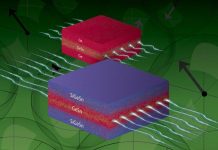
In the quest for greener energy solutions, researchers have made a groundbreaking advancement in solar technology.
They’ve developed a new method for producing high-quality perovskite films at room temperature, which significantly enhances the efficiency of solar cells.
This innovation, detailed in the journal Joule, simplifies the manufacturing process and could pave the way for more sustainable energy production.
Perovskite solar cells are gaining attention as a promising alternative to traditional silicon-based cells. They are lighter, flexible, and can even be sprayed or printed, much like ink.
These cells are not only versatile but also potentially less harmful to the environment compared to their silicon counterparts, which require high temperatures and sterile conditions to produce.
However, the typical production of perovskite cells involves complex procedures including high-temperature annealing and intricate post-treatment steps.
These processes are not only time-consuming but also limit the material’s integration into everyday products and increase the environmental footprint of their production.
The team of researchers, led by Ahra Yi, a postdoctoral researcher at UC Santa Barbara, and Sangmin Chae, a doctoral student, has found a way to bypass these cumbersome steps. “Our method follows the conventional procedures, minus the most time-consuming parts: thermal annealing and post-treatment,” Yi explains.
This streamlined approach not only fits better with standard manufacturing processes but also reduces energy consumption and CO2 emissions.
The new perovskite solar cells crafted using this room-temperature method have achieved an efficiency of 24.4%, a significant improvement over the previous maximum of less than 20% for similar room-temperature processed cells.
“Our optimized perovskite solar cell surpassed previous limits, showcasing remarkable efficiency,” says Chae.
In an impressive demonstration of the method’s gentleness, the researchers prepared a perovskite layer on a fresh leaf. This feat, which would have been impossible with the high-temperature processes, underlines the low-impact nature of the new method.
The leaf coated with a thin, silvery perovskite film illustrates the potential for integrating this technology with natural elements and opens up possibilities for unique applications.
The innovation holds promise for the development of high-efficiency solar cells with diverse, free-form designs that could power a broad range of technologies, from wearable electronics to Internet of Things (IoT) devices.
Thuc-Quyen Nguyen, professor and director of the UCSB Center for Polymers & Organic Solids and senior author of the study, notes, “With our approach, we can now contemplate solar cells in free-form designs capable of powering the ever-increasing array of electronic devices in our daily lives.”
This breakthrough not only advances the field of solar energy but also contributes to the broader goal of reducing our carbon footprint and harnessing cleaner power sources.



